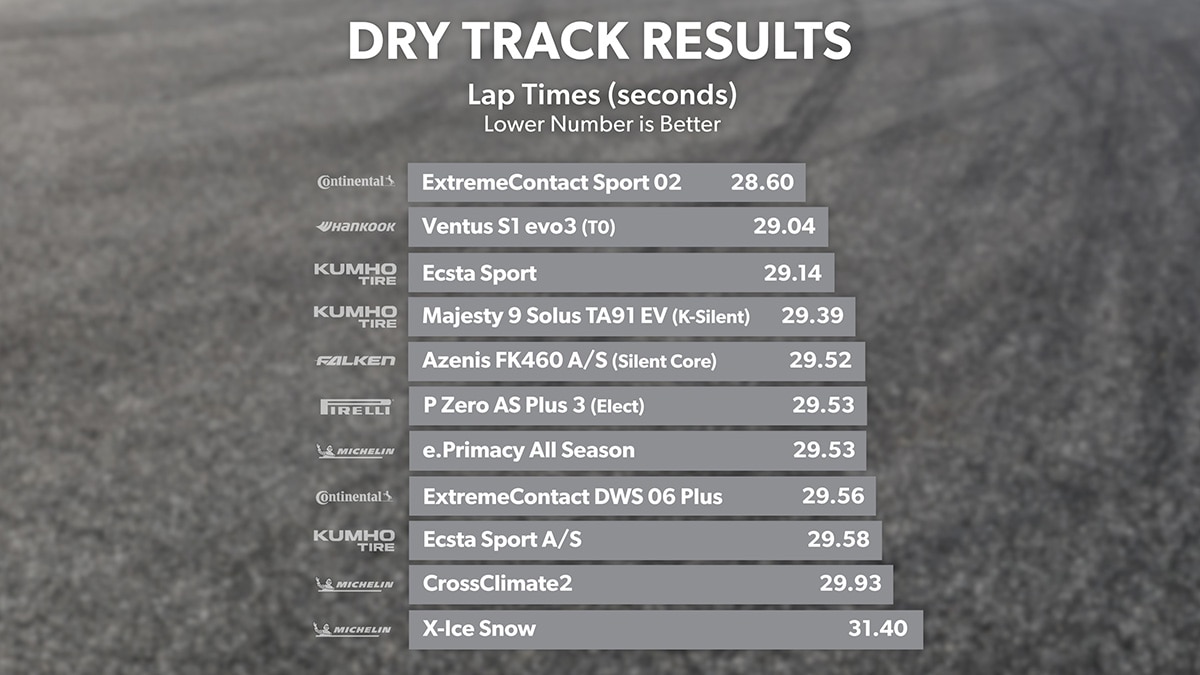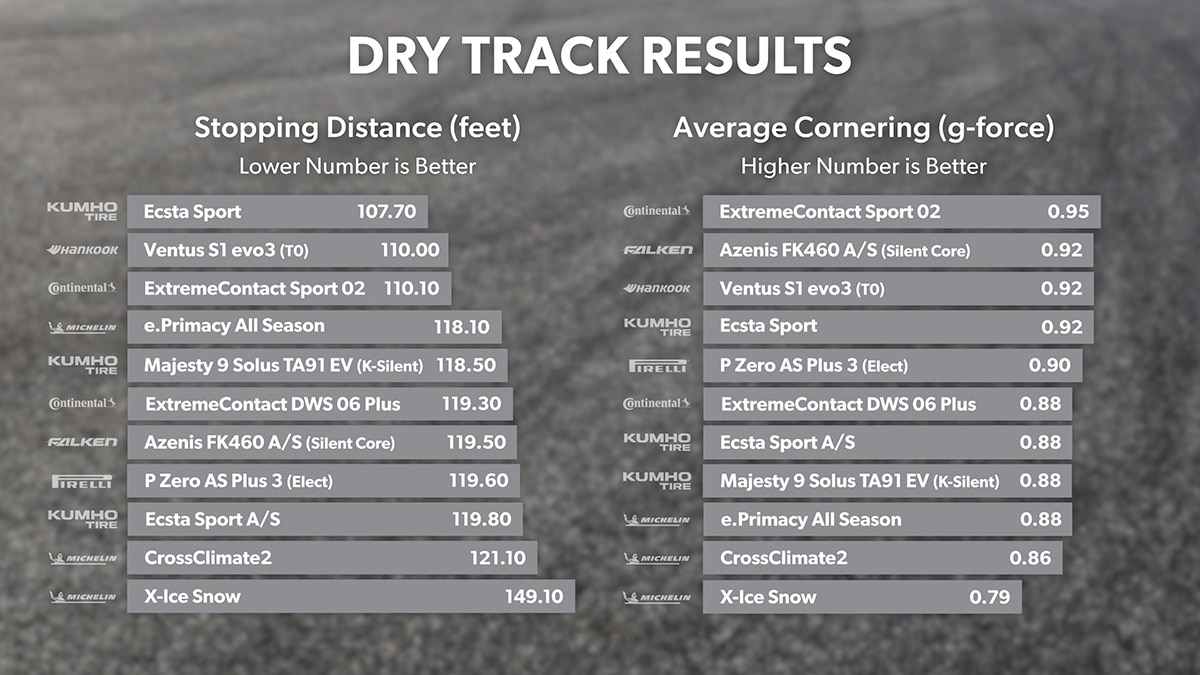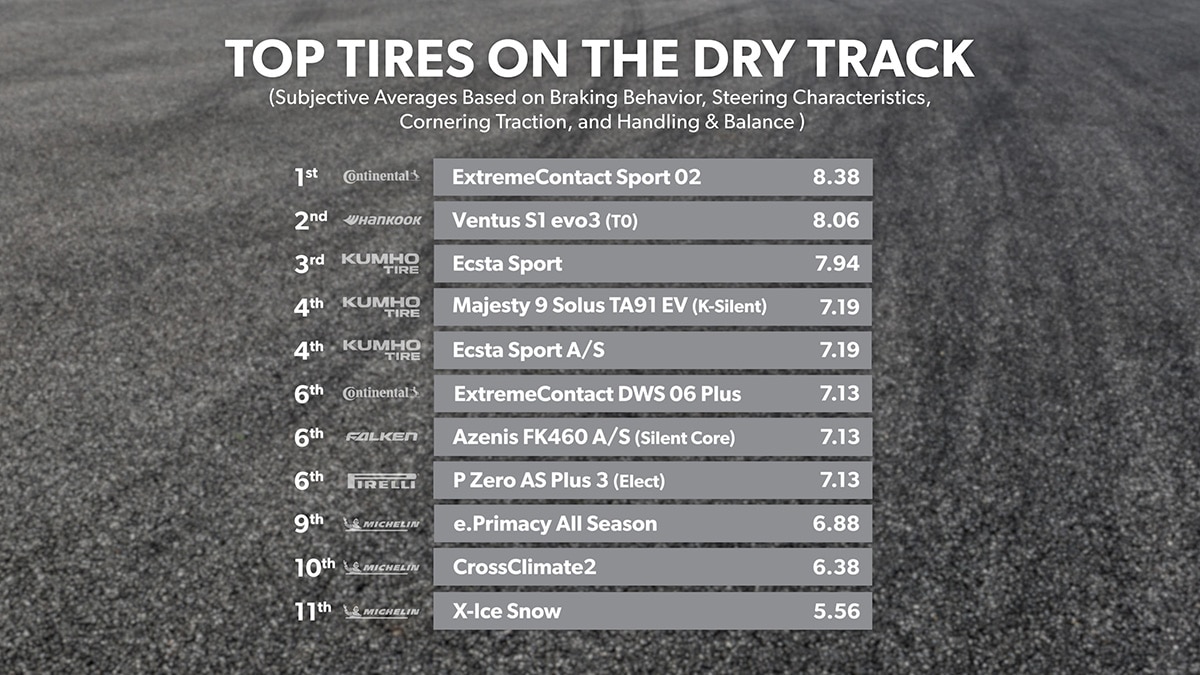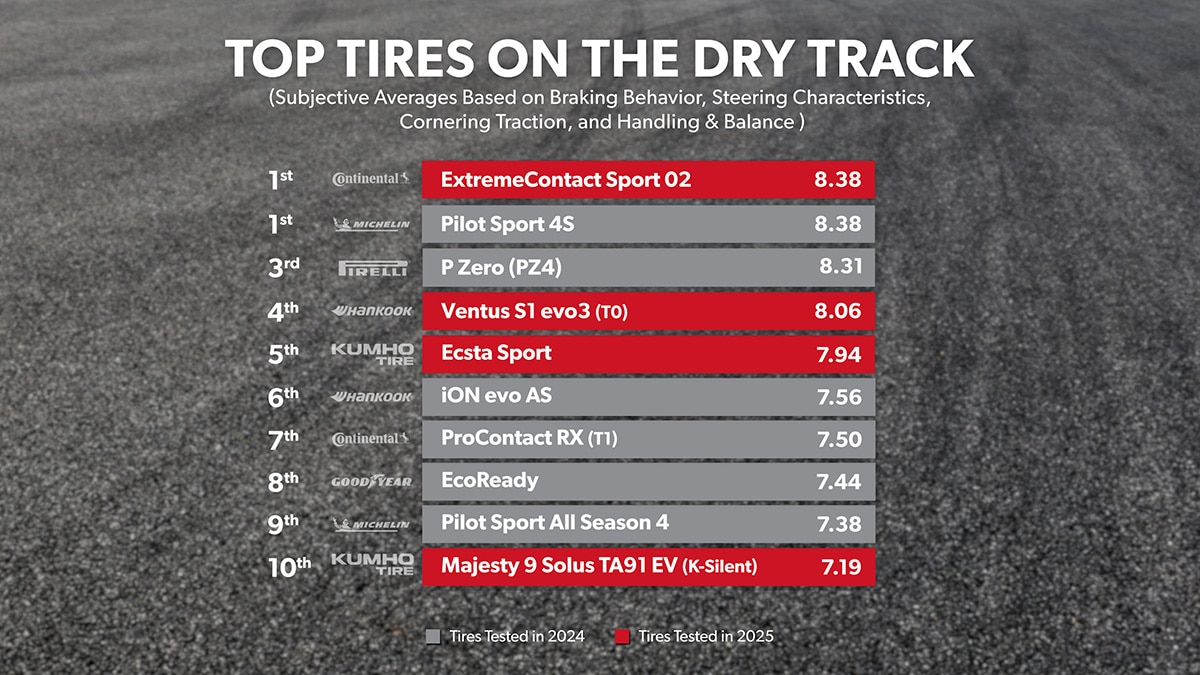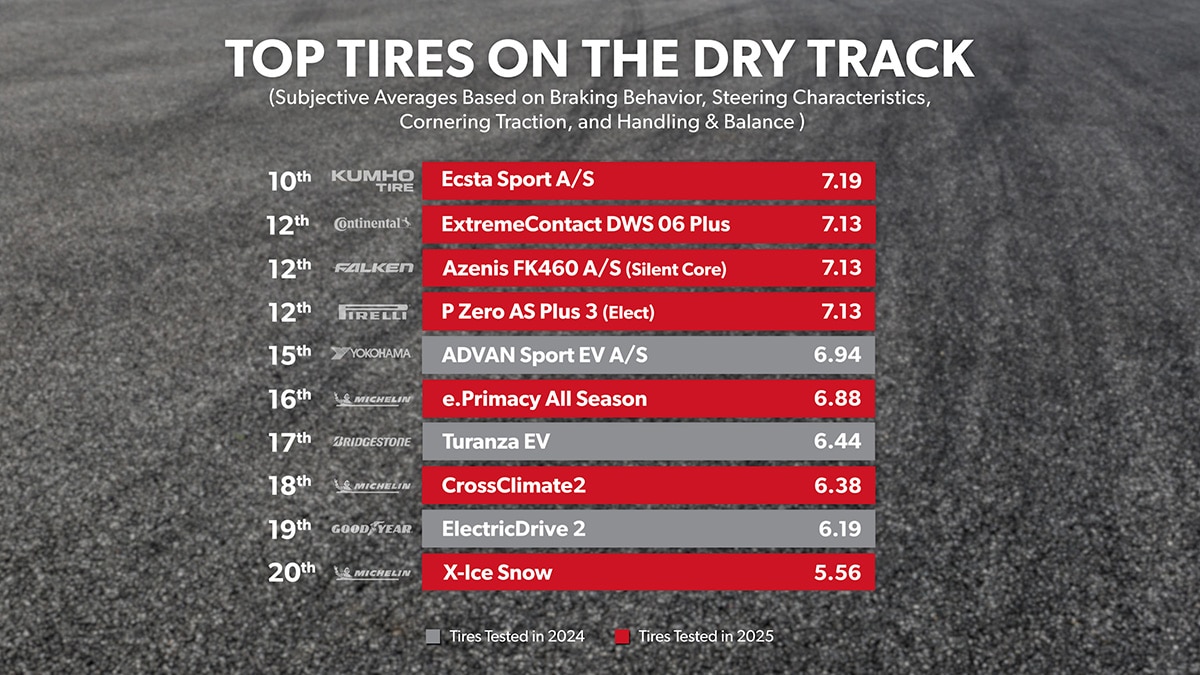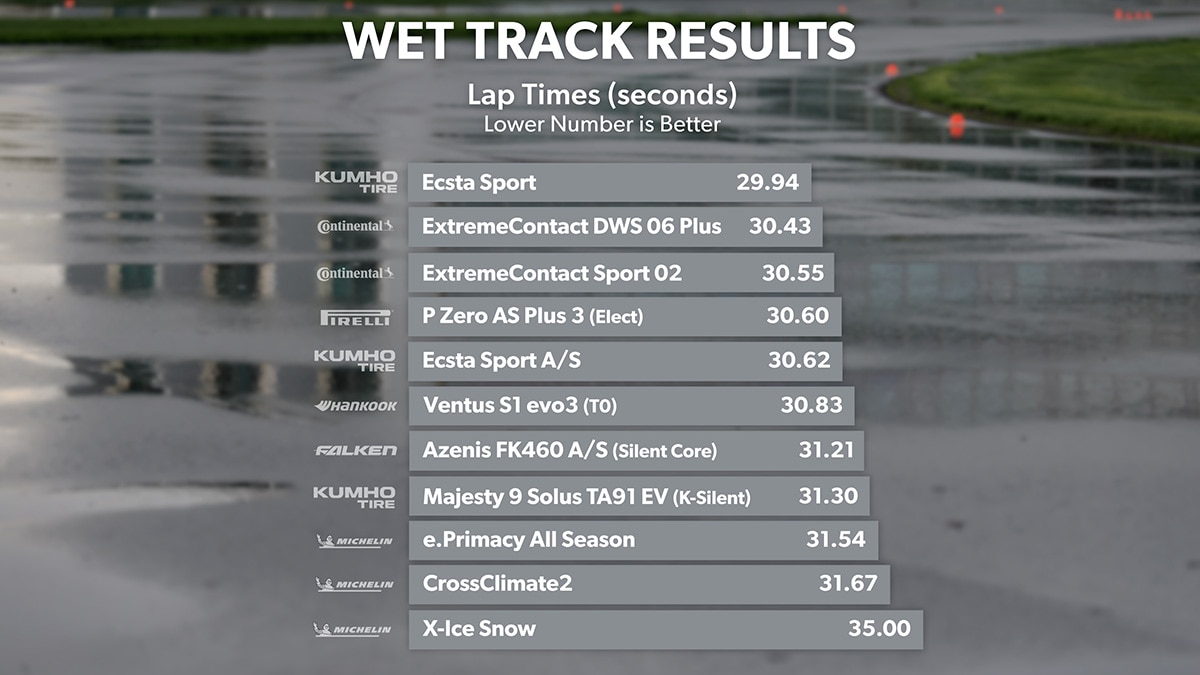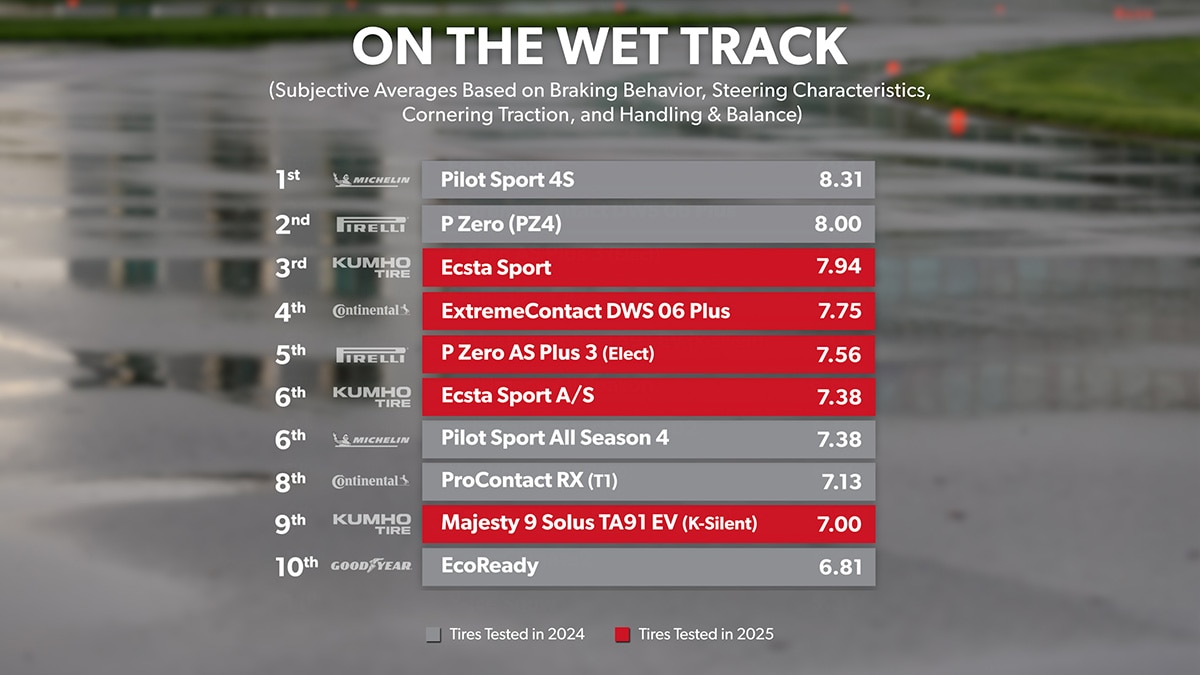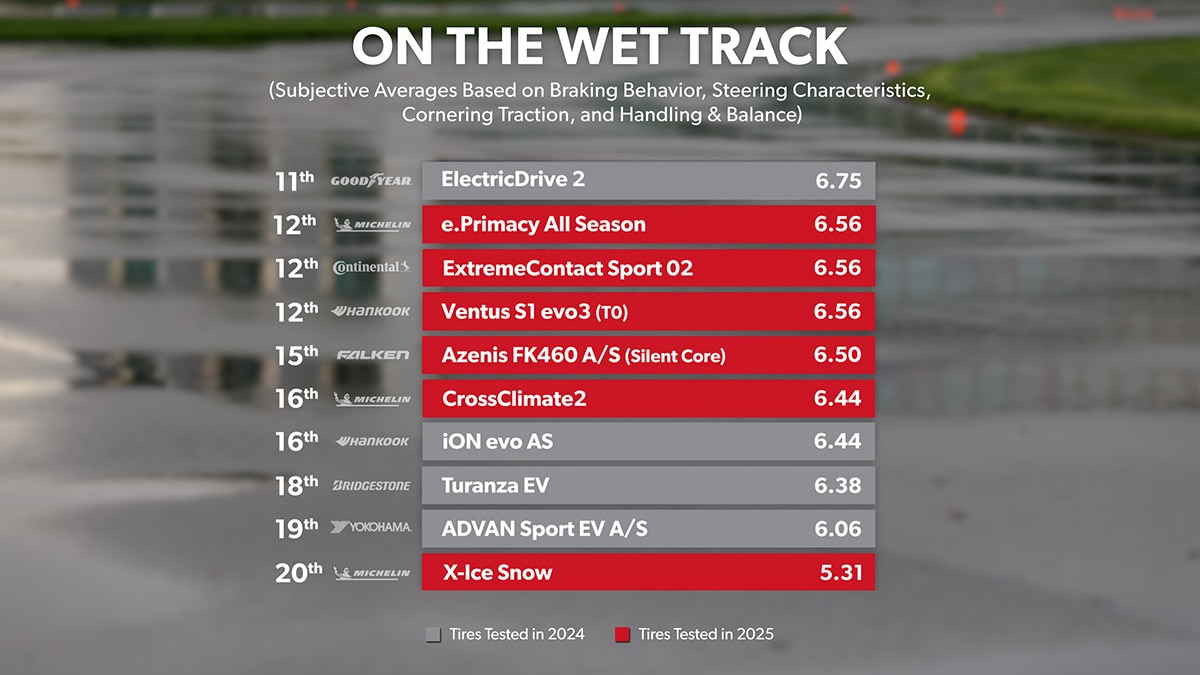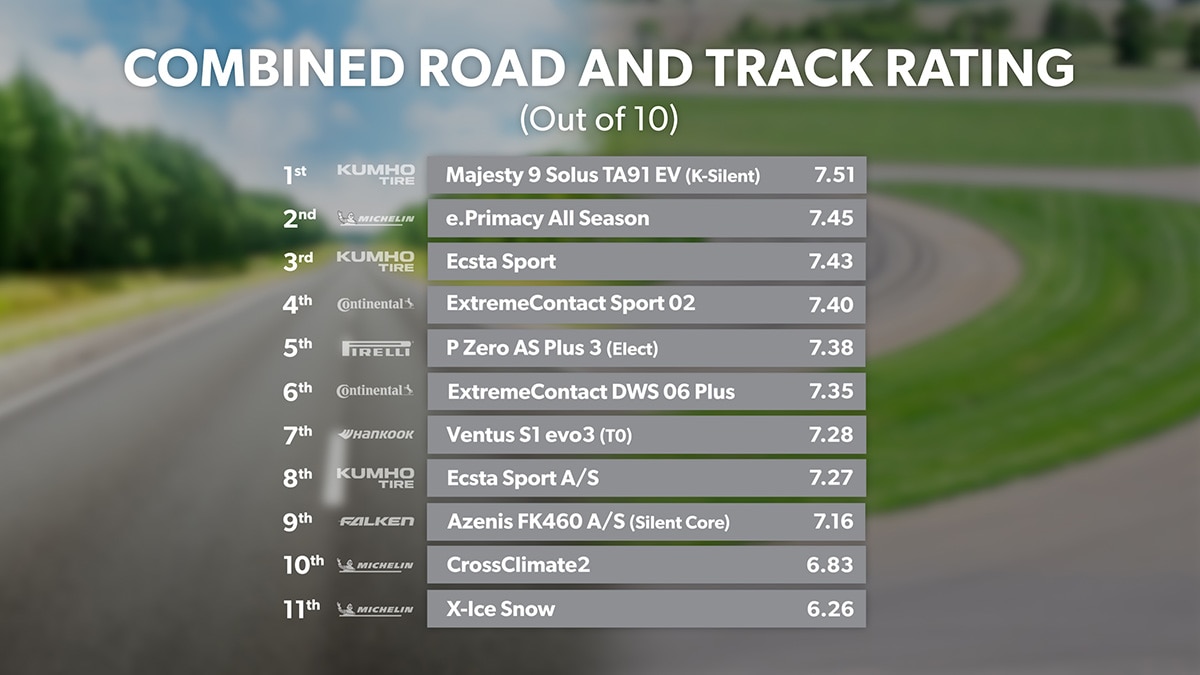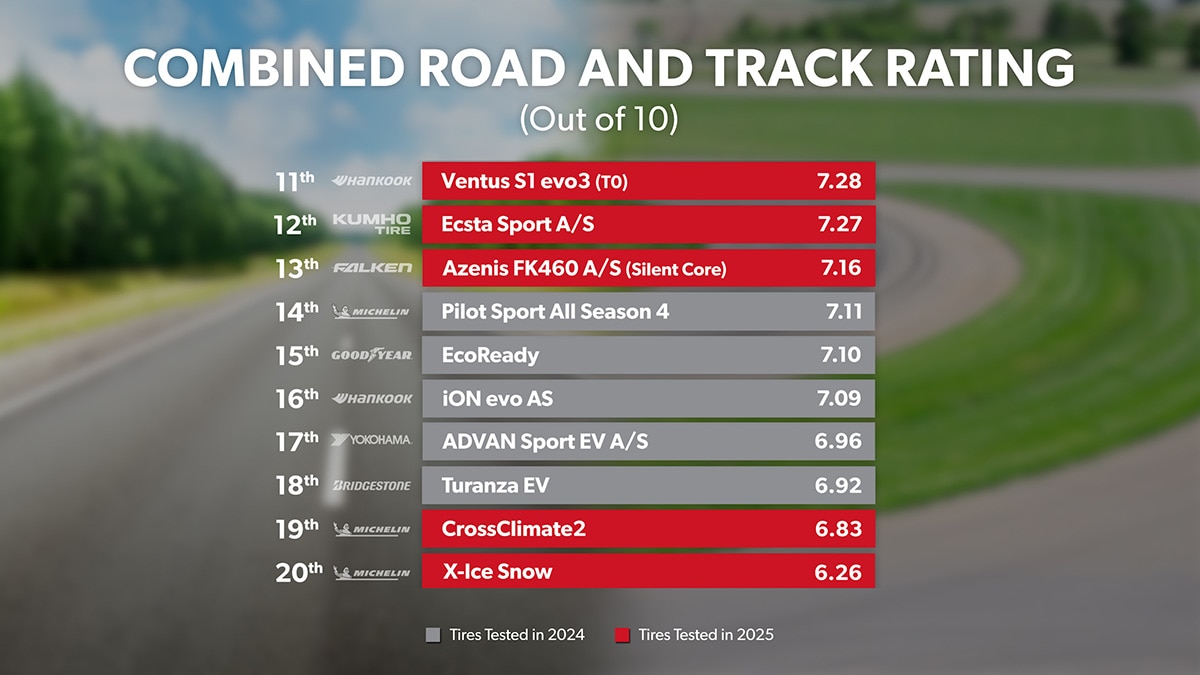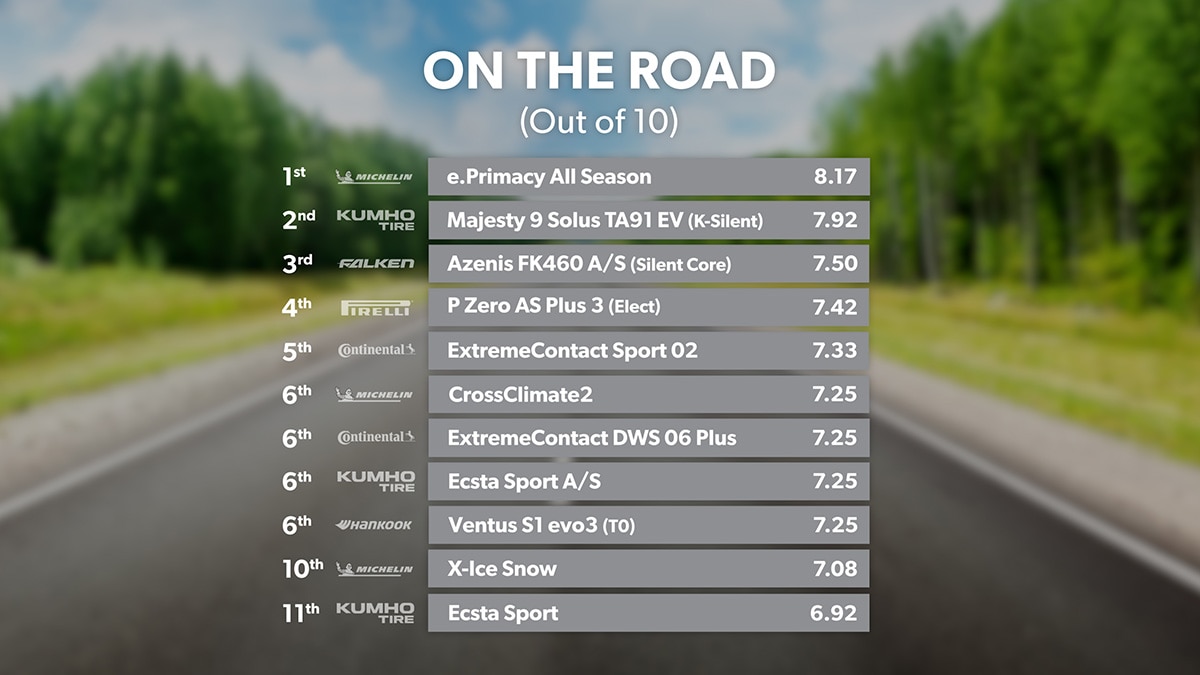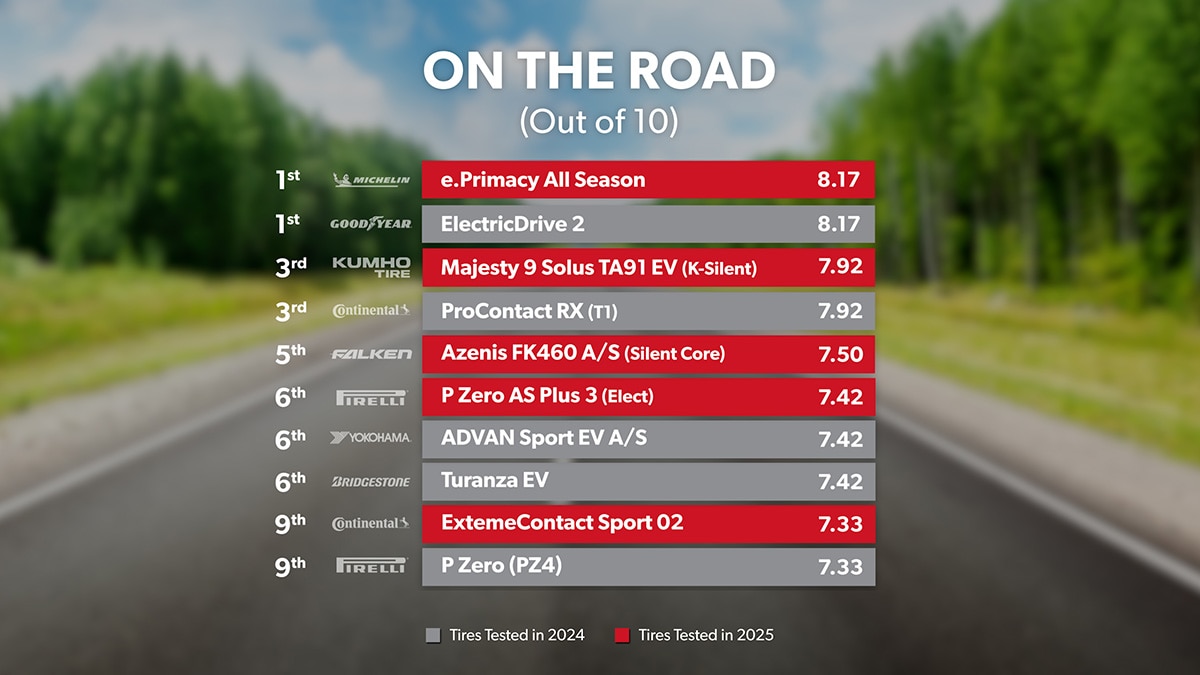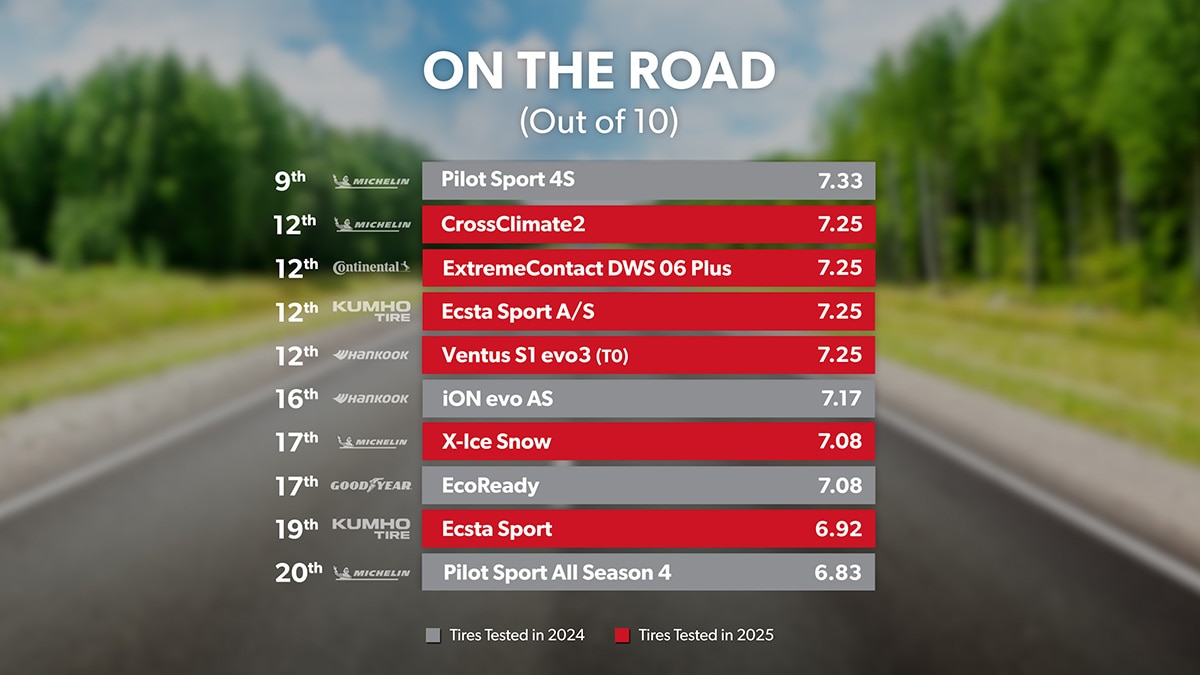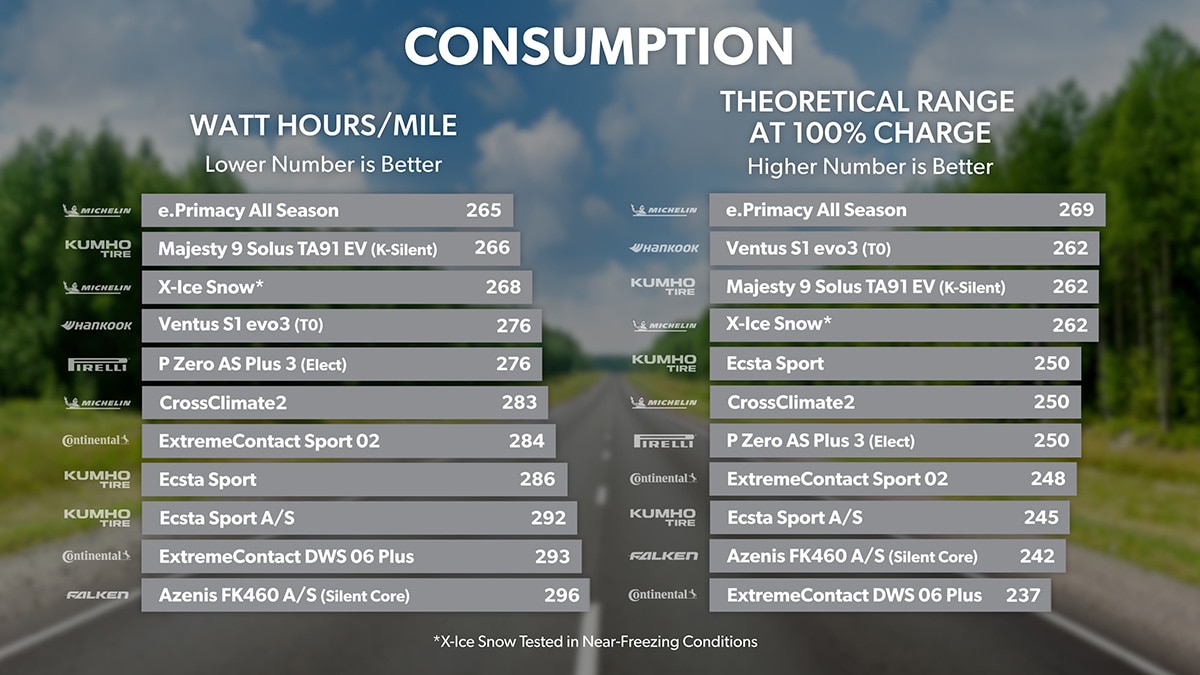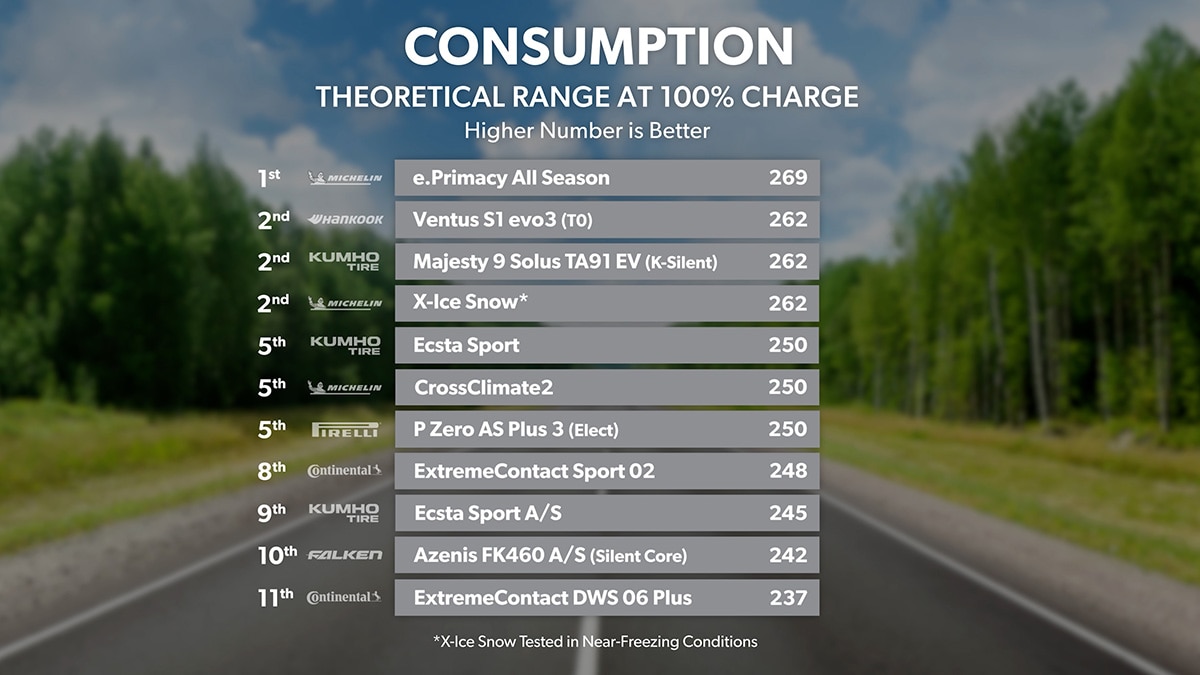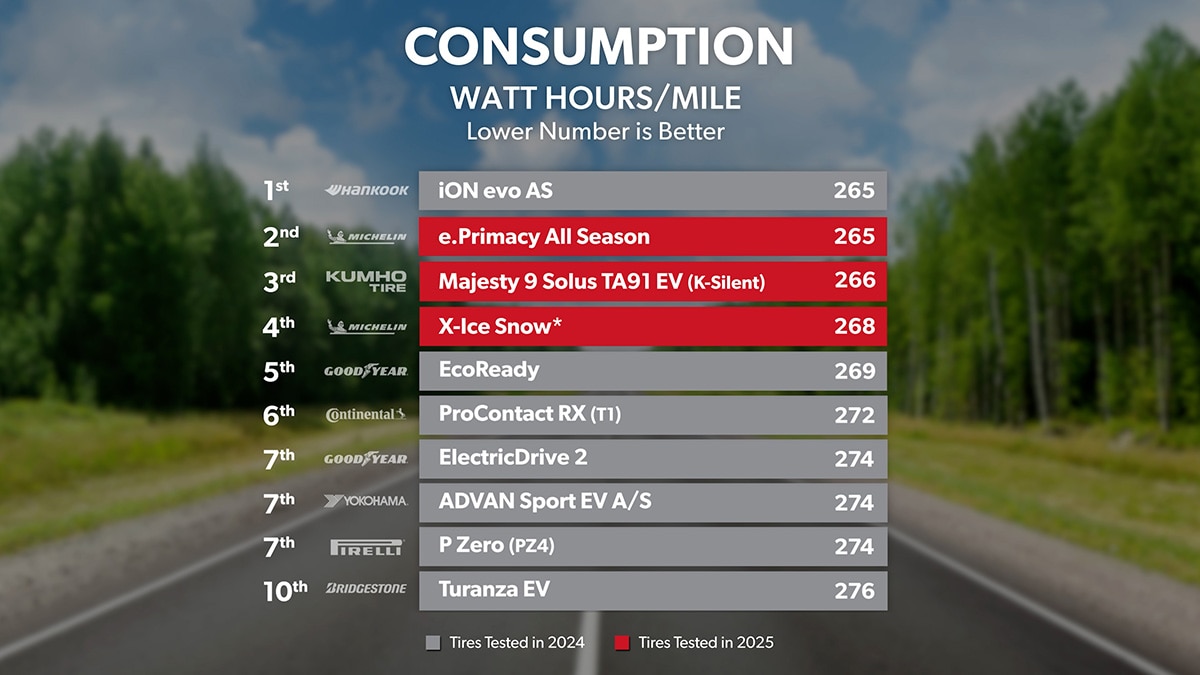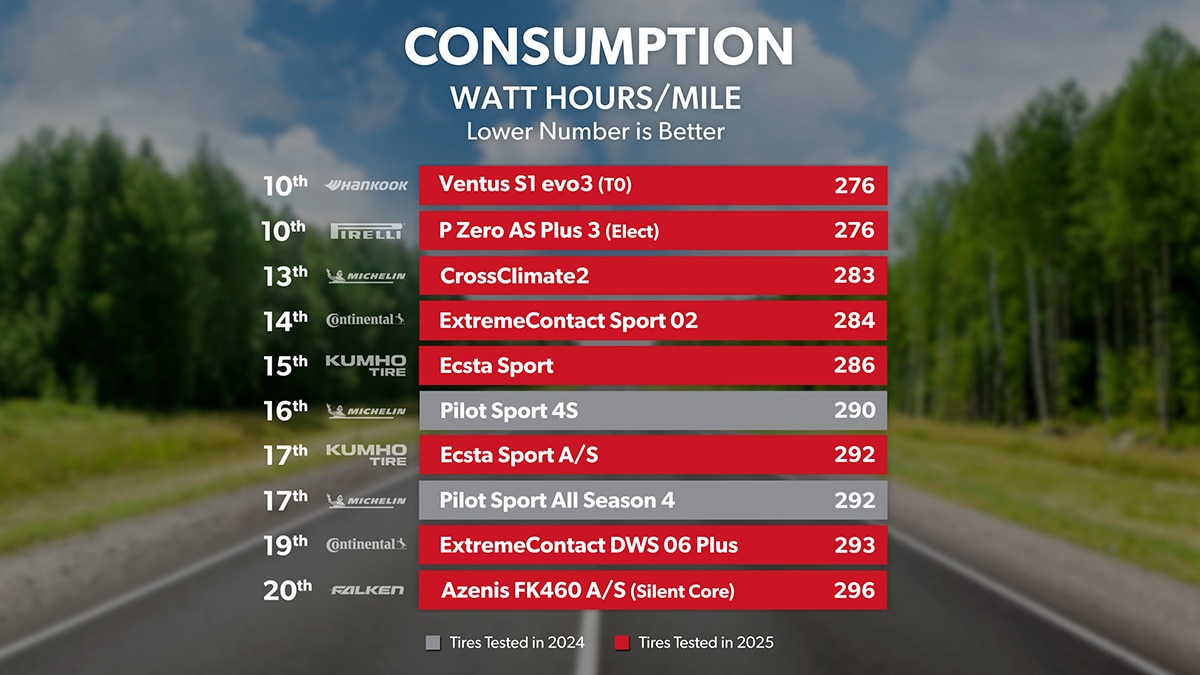Electric Vehicles (EVs) have been quietly rewriting the rules of the road for a while now—bringing instant torque, gasoline-free travel, and a vision of long-term sustainability - in addition to faster tire wear and extra weight to consider. In response, tire makers have filled the market with new designs aimed squarely at the unique demands of EVs. And here's where it gets tricky: tires are a game of trade-offs. Chase one performance metric too hard, and something else gives. It's like tuning an instrument—tighten one string, and the harmony shifts. Boost grip, maybe you lose a bit of plushness. Improve efficiency, and you may sacrifice wet and winter traction. There's no perfect setting, no magic formula. Just a series of careful decisions, each with its own effect. In the EV world, where silence and efficiency carry more weight, those choices matter more than ever.
So, how much do these design choices actually shift the needle when it comes to ride comfort, handling precision, and road noise—especially across different tire categories? That's the core of what we're exploring. We've assembled a standout lineup from across the industry to find out: Continental, Falken, Hankook, Kumho, Michelin, Pirelli—each bringing distinct engineering priorities to the table. Some lean into low rolling resistance and acoustic damping. Others prioritize lateral grip or tread longevity. EV-specific or not, every tire in this test has something to prove—and the results are in the details.
We'll introduce each in turn, break down our experiences with them on our real world road ride, including their energy consumption measured in Watt Hours per Mile, abbreviated as Wh/mi. Then discuss their traction and subjective behavior on both a wet and dry track to understand how these tires act when pushed to their limits, mimicking the kind of high-speed emergency maneuvers you might need to deal with in a sudden crisis.
We'll be starting off with Grand Touring All-Season tires - one of the most common tire categories for everyday drivers, and the type of tires most likely to be on whatever car you're driving currently. They're designed to be good at everything needed for a regular commute in all types of weather, all year long. Consequently, that means they're usually outclassed by more specialized tires in individual performance, but, depending on the tire of course, as a holistic option, it's hard to find a more versatile choice.
Kumho Majesty 9 Solus TA91 EV
The Majesty 9 Solus TA91 EV (K-Silent) is Kumho's EV-specific variant of the Majesty 9 Solus TA91. Kumho claims to have made several tweaks to the tire's construction - in addition to sound-absorbing foam - to better accommodate the demands for rolling resistance and enhance vehicle stability over its baseline model. So, how does it actually perform? During the road ride, we found the ride quality to be quite good - large impacts were firm, and smaller undulations like tar strips were noticeable, so it doesn't completely isolate what happens on the road surface; it's not uncomfortable, but not perfectly smooth either. Road noise, on the other hand, was excellently handled - at lower speeds and smooth surfaces, it was nothing but air and the hint of motion. Even more notably difficult surfaces like cross-cut concrete or chip-and-seal roads barely registered. The steering was reactive, urgent, like it was built specifically for the vehicle - it could be just a little more direct, but outside of tire-to-tire testing, it would be hard to notice. In addition to its laudable road and track performance, the Majesty 9 Solus TA91 EV (K-Silent) was one of the best tires in the test for efficiency at 266 Wh/mi, only a single Watt hour off from the leading tire.
Pushing the tires on the wet track showed it to be a very capable partner in handling a slippery surface - not a perfect partner, but a good one. The steering was again, nicely accurate, it pointed our drivers where they wanted to go. Even if the experience was a bit more tail-out, it was controllable and forgiving at the limit. Overall traction was down compared to the more performance-focused tires in the test, but was one of the nicer touring options. Once the track dried off, it was a similar story - it would have been nice if it felt a hair more locked down and underneath the driver, but it was predictable, manageable and had enough traction to operate at a level higher than we would consider typical for touring tires. Not so much that it's quite on that level…but close, and enough to hang on with more speed in corners or later braking that experience has taught should land our testers in trouble. A very nice tire overall.
Michelin CrossClimate2
The CrossClimate2 needs no introduction - it has been the most popular, survey chart-topping option in the category for years now. That is both a credit to the tire, and a weakness, as it has allowed the competition the opportunity to catch up. During the road ride, our testers noted the ride was firm over large impacts, and small imperfections translated into notable motion. Good, but not world-beating. Noise comfort was a bit more intrusive, particularly compared to the EV-focused tires in the test - with multi-tone, low-pitched sounds, tread growl and occasional impact noise making up the predominance of it. Enough to notice, though still good for the category writ large. Steering was also appropriate for the category, tight and felt controlled, but with a slight perceptible delay when applying input. In terms of efficiency, the CrossClimate2 was strictly middle-of-the-road, it wasn't bad at 283 Wh/mi, but was still 18 Wh/mi miles more compared to the leading tire.
On a wet surface, the CrossClimate2 delivered quick, weighty steering and solid braking performance, particularly in tighter corners where other tires had struggled. The front axle would give up first, so it was prone to understeer, and tended to push through turns. While generally stable and easy to manage when it broke loose, it lacked cohesive traction and ultimate grip, making it feel capable but not confidence-inspiring. Once the track dried off, the CrossClimate2 was just down in general compared to most of its competition this test - displaying a lack of athleticism that made tight maneuvers in particular more difficult. It offered decent initial steering input, but often failed to maintain grip through a corner, making the steering feel like it promised more than it could deliver - which felt unpredictable and harder to place accurately. While certainly manageable within its limits, those limits felt inconsistent and difficult to read depending on what the car was doing.

Michelin e.Primacy All Season
One of the newest tires being tested here, the e.Primacy All Season is one of Michelin's most efficiency- and longevity-focused tires, and while a long life is great news to drivers from a value proposition, it's hard to get excited about if the tire isn't that nice to drive. Thankfully, based on our road ride, it's off to a good start. It was nicely composed over any small imperfections, and while larger impacts were audibly noticeable, the e.Primacy All Season smoothed them out very admirably. Its ability to control noise was especially impressive, the best in the test - it was nearly silent over smooth surfaces, and even some of the harshest surfaces on the ride were so well managed typical travel sounds didn't rise above the electric hum of the motors. Steering was progressive, not fast, but good for the category, responsive. As an efficiency-focused tire, the e.Primacy All Season proved a resounding success: topping the chart at 265 Wh/mi. There were a couple of tires that were at least close, but it was the leader here.
It was stellar on the road, but when pushed to handle emergency situations brought on by high speeds and hard driving, how did the e.Primacy All Season stack up? On the wet track, it felt nice to drive - a classic case of "more than the sum of its parts" - it didn't have the outright grip of some of the other options, couldn't be leaned on quite so hard in turns or late braking, but it clearly communicated where its limits were. It could still get out of sorts if our drivers pushed too hard, but with care, it could be kept at or around them for a pleasant drive around on an otherwise slippery surface. The dry track was a similar experience - steering felt predictable, and again, communicated where and how it felt before it became a problem. It wasn't quite as precise or athletic as some of the "sportier" options, but it wasn't a major step down either, and it was well-balanced enough to be playful in skilled hands.
Ultra High Performance All-Season (UHPAS) tires are the next category of tires we're looking at. As the name implies, these tires are focused more on handling and high-speed responsiveness than their all-season touring counterparts. They're still expected to handle daily driving needs all year long, and managing that balance between commuter comfort and raw ability is part of the job of any UHPAS tire.
Continental ExtremeContact DWS 06 Plus
This is one of the most venerable UHPAS tires we're examining, routinely staying at, or near, the top of our testing and customer surveys in its category. The ExtremeContact DWS 06 Plus may not have an EV-focused build, but its status as a quality tire has been affirmed many times over. On the road, on our Tesla, as expected of a performance tire, it was firm without being harsh. It didn't eliminate bumps, but kept them concise. Imperfections were mostly felt in the hands. Noise was notably consistent, a regular tread roar or resonance that stood out, particularly in comparison to the touring tires, even if it was not intrusive or grating overall. Steering was quick to respond and direct. As a tire not really developed for it, efficiency was not a priority of the ExtremeContact DWS 06 Plus, and it was very nearly at the bottom of the chart for it, at 293 Wh/mi.
Once we took the ExtremeContact DWS 06 Plus onto the wet track to push its ability to handle more demanding driving, it demonstrated strong lateral grip, quick steering, and highly confident braking that helped stabilize the car even when entering corners too fast. It stayed composed and predictable, closely matching driver inputs with minimal drama for a professional, focused feel that made handling emergency maneuvers controlled and secure. However, once the track dried off, the ExtremeContact DWS 06 Plus still felt capable and kept the car composed, but didn't hold on through turns quite as securely as we'd have liked, and showed some smearing during transitions. There was little question it performed better than typical touring tires, but fell short of the sharpness and stability of the top-tier options in this test.
Falken Azenis FK460 A/S (Silent Core)
The Azenis FK460 A/S (Silent Core) is Falken's EV-focused version of its existing Azenis FK460 A/S. During our road ride, it was generally comfortable underneath our drivers, though it exhibited some jiggle over smaller imperfections and felt somewhat choppy on rougher surfaces. Noise levels were moderate, with elevated volume over coarse textures, but a notably quieter experience on smoother pavement. Steering was quick and responsive without feeling overly sharp, delivering a composed handling experience that felt particularly good to drive. However, this was the least efficient tire we tested at 296 Wh/mi. It was a significant gap from the leading tire, nearly 30 miles of range on a full charge.
On the wet track, the Azenis FK460 A/S (Silent Core) demanded a gentler driving approach, as it struggled with combined inputs and required earlier braking and gentler steering to stay composed. Understeer set in earlier than expected, and it simply felt like a step back from some of its rivals here. Attempts to push harder resulted in noticeable loss of lateral grip and a lack of braking confidence. While it captured some of the traits expected from a UHPAS tire, what it ultimately delivered was a softer, less performance-focused version of that experience. It brightened up a bit once the track dried off, offering a casually athletic character that was responsive, easy and balanced to drive, without feeling overly aggressive. Grip and speed were respectable, but fell short of the sharpness and outright pace of top performers. While ultimate lateral traction could have been stronger in tight corners, it communicated well and remained stable, making for an enjoyable and predictable experience on the dry track.

Kumho Ecsta Sport A/S
Another fresh Kumho product for this test, the Ecsta Sport A/S released in a trio alongside the Ecsta Sport (also in this test), and Ecsta Sport S - as the more rounded all-season option, it needs to strike a balance managing performance with comfort and year-round capability. During the road ride, it was on the firmer side, but did manage to handle small undulations and imperfections well. Anything more significant was going to be felt, large impacts in particular were simply transparent to the cabin. Noise was good on the whole - on the louder side for the group, with some noticeable tones emanating from tar strips, but tonal variety was largely homogenous, just a bit louder. Steering was tight and responsive, it felt good, within expectations for a performance tire. It was among the least efficient tires however, coming in at 292 Wh/mi.
Wet testing showed us several strong capabilities - steering was direct, if not the most immediate, it felt natural to drive. Lateral traction was especially nice to have in reserve, and it was quick through the slalom or tearing around corners, using the front and rear together well - nice to have when making quick decisions on a rainy street. Braking was also notably good, not the best in the test, but competitive and well-matched to its other capabilities. The dry track experience was consistent as well, it was an easy tire to drive, find its limits, and manipulate the vehicle within them. It wasn't a top performer in lap times or braking or any objective metric, but there was also no real drama with it either.
Pirelli P Zero AS Plus 3 (Elect)
Another EV-focused variant of a popular existing choice, the Elect branding is how Pirelli distinguishes their EV specific tires. On the road, it delivered a comfortable and composed ride for a UHPAS, handling both small undulations and big impacts with ease, though some impact noise was more noticeable than the actual feel. Noise levels were generally low across all surfaces, with minimal tread noise and subdued volume on concrete and coarse asphalt, even if it didn't quite match the quietest tires in the group. Steering felt natural and predictable—more in line with a touring tire than a sharp performance product—but still responsive enough to feel confident on the road. It was competitive with some of the more efficient tires in the test at 276 Wh/mi, a good baseline.
The P Zero AS Plus 3 (Elect) performed well in wet conditions, not quite top-tier overall, but on par with some of the strongest competitors. It offered confident braking and responsive front-end behavior, with a sense of eagerness in helping the car turn without feeling unnatural. Though it did move around slightly under heavy throttle, it remained predictable and communicative at the limit, making it easy to drive confidently. The dry track experience was in the same vein, but the steering in particular felt magnified - more so than in the wet - as if the tire was boosting each input, helping it turn just a little further. It wasn't so much that it could be an issue, though it did make it feel a touch less accurate, harder to dial in exactly where it needed to be.
Ultra High Performance Summer tires are, much like their All-Season brethren, expected to perform beyond what a typical touring tire can offer in high-speed situations for sports cars and luxury vehicles, while still maintaining a level of refinement suitable for daily driving. By abandoning cold-weather considerations, they can field compounds with greater wet and dry capability as they heat up from use and ambient temperatures.
Hankook Ventus S1 evo3 (T0)
The latest in the Ventus S1 evo line, this particular variant is one of the OE Tesla tires, and as a factory option, it was time to see just how it would stack up in a field that now offers a glut of aftermarket replacements. Our first impressions on the road were that it felt like a performance tire - the ride was firm, making concise work of impacts, particularly minor undulations and tar strips, even if the larger hits could be a tad harsh. Noise control overall was decent - there were multiple tones at highway speeds over crosscut concrete, and most asphalt had noticeable tread interaction, even rumbling on some of the smoother surfaces. It wasn't the loudest tire in the test, but it was not close to the quietest either. Steering felt good mid-corner and loaded up on the off-ramp, properly performance-tire quick, but not perfectly precise. It was among the more efficient tires in the test at only 276 Wh/mi, only a theoretical 7 mile range reduction off the leading tire.
The cooler ambient temperature did no favors to the warm-weather compound in the Ventus S1 evo3 (T0) when it came to evaluating its wet performance. It was still very lively, and the steering was immediate, promptly directing the nose where it needed to go. Lateral traction was strong, it could hold on through cornering and directional changes, but it took further to brake, and wanted to snap the rear out or swing into oversteer under throttle. It was athletic, but not happily so. On a dry surface, the Ventus S1 evo3 (T0) brightened up significantly. It felt eager, primed and ready to point, drive, move. Maybe a little too eager for the rear end at times, and needed slower inputs to keep it in line, but it was the 2nd fastest tire around the dry track we tested. While it might not have been as clean and clinical as a Max Performance tire, even getting close was a credit to its ability.
Kumho Ecsta Sport
The other of Kumho's new products for this test, the Ecsta Sport leans more toward performance in lieu of making considerations for cold-weather performance. On the road, we found a firm but category-appropriate ride, with noticeable vertical motion over small bumps and a somewhat hollow feel on larger impacts. Noise levels definitely varied by surface—there was a persistent drone on concrete and some tread-related tones on asphalt and smooth pavement, though nothing excessively loud. Steering response was quick but lacked precision, feeling a bit artificial at times and left us wanting more accuracy in how inputs translated to the road. The Ecsta Sport was toward the lower end of the tested spectrum for efficiency at 284 Wh/mi.
The Ecsta Sport brought impressive confidence and control in wet conditions, offering sharp, accurate steering that made it easy to place the car exactly where we intended. Lateral grip was strong and well-communicated, allowing the tire to respond quickly to aggressive inputs without becoming unsettled. While braking performance didn't quite match the highest expectations for the category, it was still effective and complemented by the tire's ability to translate driver input into predictable, usable performance. On the dry track, it felt eager to turn in and was generally cooperative through corners. While it did lack the locked-down precision and underfoot confidence of some of its rivals, it made up for it with playful handling and quick steering. The steering felt like it gave a bit more than 1:1 however, which made it difficult to be perfectly accurate. Braking was effective and consistent, though the tire felt a bit more fluid and harder to extract the maximum from compared to more composed options.
Moving up the performance pipeline to Max Performance Summer tires, these are top-tier products built to provide the highest combination of wet and dry performance, while still providing superior on-road refinement and comparable tread-life to UHP Summer tires. They're typically nice to drive, as fitments include high-end sports and luxury cars, but the trade-off between these and touring tires is appreciable in both directions.
Continental ExtremeContact Sport 02
We only selected one Max Performance Summer tire to include in this test, and as one of the most popular, highly-reviewed options in the category, the ExtremeContact Sport 02 was a natural choice. It isn't an EV-focused tire, but its available sizing and top-tier performance are compelling. In practice on the road, it was firm, expected of a high-level performance tire, but not harsh. Noise was again, expectedly higher - it was mostly a well-mixed drone, with no significant standout tones. Impacts carried a bit of slap and ring to them, but those were brief, handled quickly. Steering was quick, requiring less input than any of the other tires to initiate directional changes. While not as pronounced thanks to the somewhat numb Tesla feel, it was still noticeably more lively. Interestingly, it wasn't one of the least efficient tires in the test. It wasn't one of the best either, at 284 Wh/mi it was closer to the lower end of the spectrum, but for such a performance-centric tire, the tradeoff wasn't significant.
Putting the ExtremeContact Sport 02 through its paces on the wet track was interesting - the ambient temperature was a little cooler, and combined with the cold water, we did not see performance in line with what experience has shown us is typical for the category. It was still bright, quick and accurate to steer - but felt down overall in traction, chattering through corners, understeering, even braking felt weak. Combining inputs was right out, no braking and steering at the same time - it had to be driven very basically to make it through. Once the track dried off, the ExtremeContact Sport 02 was absolutely back. It felt like it was planted, underneath our drivers. Strong braking that matched its traction elsewhere, easy recovery, it could be taken to the limit and kept there, holding on through corners, the skid pad, anything needed with incredible lateral grip.
Tires belonging to the Studless Ice & Snow winter category are purpose-built to handle cold, snow, ice, and general winter driving better than anything on the market. Seasons don't happen on perfect date-lines though, they blend into one another. When the weather isn't as harsh, or they're mounted early (or kept on late), what can you expect from them?
Michelin X-Ice Snow
As one of the top-reviewed winter tires available, and in our test size, the X-Ice Snow was a natural fit to showcase the category. Our time with it on the road was generally comfortable, the ride itself tended toward firm, but was reasonably cushioned over most impacts, with a bit of secondary motion afterward - and repetitive bumps were soaked up nicely. Impacts did create some appreciable sounds, and it was somewhat noisy overall compared to the touring options, if toward the bassier-end of the frequency spectrum. Smooth roads did create high pitched warbling, and we experienced some howling on the off-ramp when it was leaning more on the shoulder blocks. It was pleasant to steer, with a linear, natural feel - it wasn't alert or immediate, but that was unsurprising from a non-performance tire. The X-Ice Snow was one of the most efficient tires we tested at 268 Wh/mi.
On the wet track, the X-Ice Snow delivered a soft, gradual experience overall. It had low grip limits, and relaxed steering response, but it was easy to use because we couldn't go very fast. Though the breakaway from those limits was gentle and predictable, its overall lack of urgency and ultimate grip made it difficult to drive with precision or pace in more demanding maneuvers. Braking and lateral traction were significantly reduced, requiring much earlier inputs and careful management to avoid understeer or unexpected slides. With a dry surface, the X-Ice Snow provided a similarly soft, low-grip experience that prioritized predictability over performance or precision. It just wasn't meant to be driven like this. Handling responses were clear and gradual, making it more suitable as a learning tool than a performance option, with limited ability to combine inputs.
Summary Conclusion
Selecting the right tire involves weighing multiple factors, and while many of those - most, really - are shared with internal combustion vehicles, electric vehicles add layers of complexity that can alter overall performance and feel. So, while some of these tires have been tested (or will be tested) on ICE vehicles, getting the EV-specific experience can be just as vital. There's no one-size-fits-all solution: every tire involves trade-offs, every vehicle is different, but by examining each one's strengths and shortcomings, drivers can better align their choice with their specific needs.
The real standouts of this test in the touring department were, somewhat ironically, tires that didn't distinguish itself in any one test. Kumho's Majesty 9 Solus TA91 EV (K-Silent) was the longest-named tire, but beyond that achievement, it was not the top tire on the road, in the wet or on the dry track. What it really excelled at was being very good at all of those things and not particularly bad at any of them. It is simply a pleasant all-around tire on the Teslas, comparable to (and maybe even better than in some respects) the best OE options. Michelin's e.Primacy All Season was a similar story - excepting that, while it was the nicest to drive on the road, its wet/dry performance was a bit of a step back. Not by much, but enough. It's worth noting that both of these tires were also the most efficient we tested as well, making them ideal selections for drivers looking for a good everyday tire. The CrossClimate2 meanwhile was good - but simply outclassed by the other two in every test. It typically excels in winter testing however, so it's worth checking back when we get circle back to them early next year.
Among the Ultra High Performance All-Season tires, Pirelli's P Zero AS Plus 3 (Elect) enjoyed a similar treatment to the top touring options - it wasn't the best at anything, but it was also very capable at most tasks it was asked to perform. Continental's ExtremeContact DWS 06 Plus was its equal in dry performance, handling, and ride comfort, in addition to being a step-up in the wet, but its slightly higher noise profile held it back in comfort concerns on the road. Both were excellent UHPAS options however. Kumho's Ecsta Sport A/S proved it deserves to be in the conversation just as much with very well-balanced performance across the board and a pleasant on-road demeanor. Meanwhile, Falken's Azenis FK460 A/S (Silent Core) stood out for its terrific on-road handling and respectable ride and noise comfort, but suffered in wet conditions compared to the other options.
Because this test was conducted early in the year, both of the summer categories were not competing in temperatures that would give them an optimal showing. That isn't to say it was cold out - on the contrary, average conditions were in the 60 degree range - but summer compounds perform better as the heat rises. This is typically around the time drivers would be retiring their winter or all-season tires to mount warm-weather fitments, so the comparison is still an interesting look at how they perform even on the lower edge of their comfortable operating spectrum.
Between the two Ultra High Performance Summer options, the Ecsta Sport was a real champion, mostly for its test-leading wet track performance and excellent dry track behavior. It comes at a fairly significant cost to on-road comfort - we still loved its lively steering, but it was also the only tire in the test we rated subjectively lower than the winter tire in overall ride scores. Meanwhile, Hankook's Ventus S1 evo3 (T0) was a dry track beast among the group, falling short only to the Max Performance Summer tire, the ExtremeContact Sport 02 in performance. Granted, it was not nearly as clean or composed doing so, but a worthy accomplishment.
The ExtremeContact Sport 02 was an interesting tire to drive this time around, notably because of the aforementioned temperature concerns. It was still a very good tire - not just the fastest around the dry track, but able to take as much as we could give it with ease. It isn't just that the tire was strong in the dry, it was composed, the consummate professional, a ready partner for enthusiasts that crave speed. It wasn't even the worst driving around in the wet, but it also clearly wasn't happy in these conditions, which should be taken into consideration during seasonal changes.
And finally, speaking of tires with a seasonal component - Michelin's X-Ice Snow. It suffered from the inverse problem the summer tires had, and none of the results here are surprising. It's a tire with a cold weather compound being asked to perform at levels it wasn't designed for. If anything is particularly worthy of note, it's that its on-road evaluation was not that far off from most of the other tires in this test, but otherwise it should serve as a good benchmark when we see how winter testing shakes up this list.

